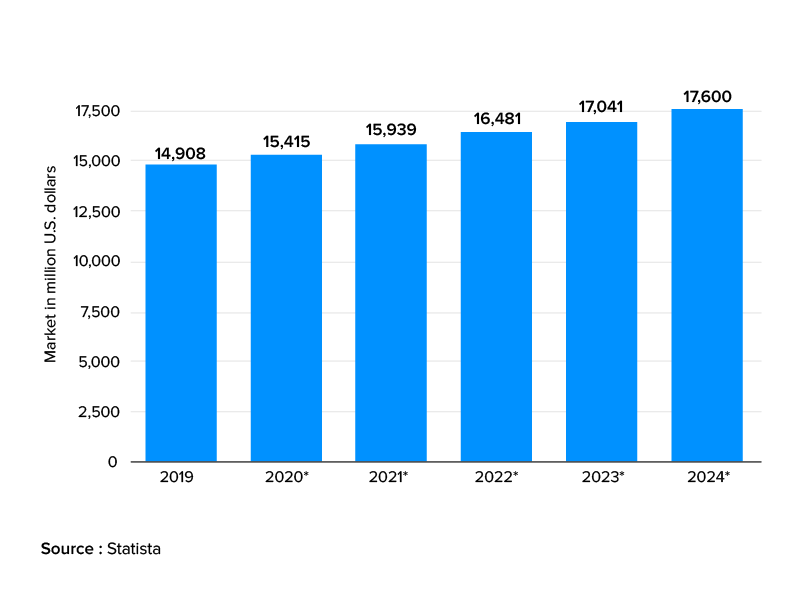There’s no denying that businesses create an overwhelming amount of data every day. In order to make smarter business decisions, identify problems, and maintain profitability, it’s crucial to use digital tools and solutions to turn your data into actionable insights. While many options are available, Business Intelligence and Business Analytics are the two most commonly used data management solutions that help gather, evaluate, and display key business information.
By utilizing these two digital solutions, organizations gain valuable insights into industry trends and enable a strategic decision-making approach.
Here are a few stats that show the increasing use of Business Intelligence and Business Analytics:
- As per Statista, the market size for business intelligence and analytics software applications is expected to increase from 14.9 billion U.S. dollars in 2019 to 17.6 billion in 2024.

- According to a survey by Forbes, 48% of organizations consider cloud BI either ‘critical’ or ‘very important’ to their operations.
- As per PR News Wire, North America is predicted to have the largest business intelligence and analytics market share due to the presence of key industry players in the area.
Now that we have seen important stats related to BI and BA, let’s understand the concepts in detail and know how and why Business Analytics and Business Intelligence solutions are important for your organization. Let us also understand the difference between Business Analytics and Business Intelligence to know which of the solutions is more viable for your organization.
What is Business Intelligence?
Business intelligence (BI) is a technology that enables businesses to organize, analyze, and contextualize business data from around the company. BI provides reports, performance measures, and company trends that help businesses make informed decisions in the present day. It is mostly used as a way to generate a detailed overview either on business or product metrics.
Here are some real-world examples that show how BI is making a difference for companies around the world:

1. Uber
The company uses Business Intelligence to determine multiple core aspects of its business. For instance, Uber uses BI for surge pricing. Algorithms monitor the time of journey, traffic conditions, and customer’s demand in real-time. So, prices adjust as demand rises and traffic conditions change.
2. Netflix
Netflix uses data in multiple ways. One example is how the company offers suggestions to users based on previously viewed programs. Netflix also uses Business Intelligence to get people to engage with its content.
3. Coca Cola Bottling Company
Coca-Cola previously had issues with its daily manual reporting processes. But by replacing the process with an automated BI system, the company completely streamlined the process and saved 260 hours a year. Now, the company can quickly check metrics related to budget, delivery, and profitability with just a few clicks.
4. Lowe’s Corp
The home improvement company is one of the earliest adopters of BI tools. They have used this technology to optimize their supply chain, analyze products to identify potential fraud, and solve problems.
5. American Express
American Express has been using BI to develop new payment service products and market offers to customers. BI also helps the company to detect any financial fraud and protect customers whose card data may be compromised.
What is Business Analytics?
Business Analytics (BA) is used to interpret and analyze historical data to identify trends and patterns in the business. BA helps companies to improve or change their current operations and make better decisions for the future. It can be used to recognize market opportunities, improve relationships with customers and better indicate potential risks.


